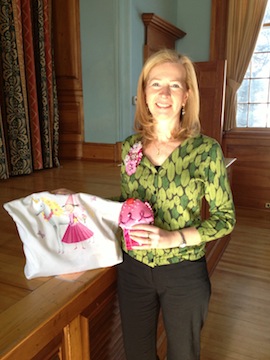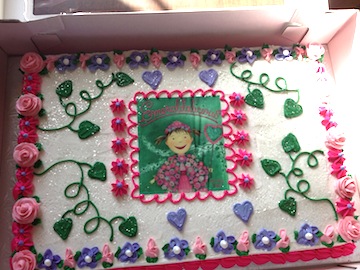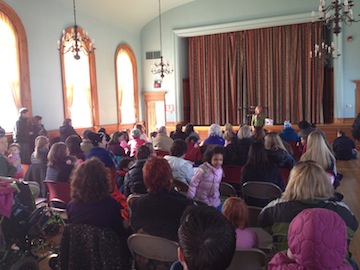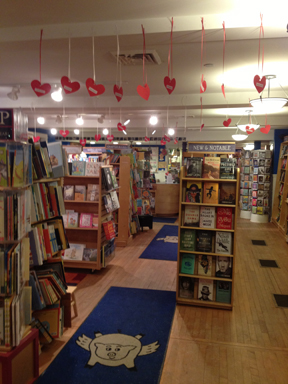Moving house is a big undertaking. The new place isn’t quite finished yet, so all of the bookcases aren’t along the walls; in fact, most of the books haven’t even been packed up and moved. Even so, the first thing I did after the major furniture was set in place and the movers had gone, was to unpack a few books to make me feel at home. Those books — the few I packed first — all happened to be children’s books, or books about them. This isn’t because I don’t love and appreciate books for adults, of course. I will have bookcases filled with the Gerald Durrells and Pablo Nerudas, the Louise Erdrichs and Nabokovs, etcetera. But those were not the books unpacked first.
In the office, I put up my books on writing and children’s literature, treasures like Dear Genius: The Letters of Ursula Nordstrom ed. by Leonard Marcus, The Pleasures of Children’s Literature by Perry Nodelman, The Invisible Child by Katherine Paterson, TalkTalk by E.L. Konigsburg, A Child’s Delight by Noel Perrin, and The Openhearted Audience ed. by Virginia Haviland.
For the bedroom bookcase, I had only packed a very few comfort books, mostly books from childhood. Ones that make me feel cozy, or call up a memorable time and place. Many, many books are missing from this little shelf; my coveted signed Last of the Really Great Whangdoodles by Julie (Andrews) Edwards was actually packed first and separately of all the books, but ended up in a box that is still at the other house. And favorites like Anne of Green Gables and Little Women and Jo’s Boys and Ronia the Robber’s Daughter and The Enchanted Castle by E. Nesbit and The Witch Family by Eleanor Estes and Gone-Away Lake by Elizabeth Enright and scores of others — including Runaway Alice by Frances Salomon Murphy and a Gary Paulsen-esque adventure book I loved but no one else seems to know, White Water, Still Water by Allan J. Bosworth — will find their way here. But for some reason, these books below were the ones I gravitated toward to make me feel totally at home. I especially adore how shabby some of these are from childhood re-reading.
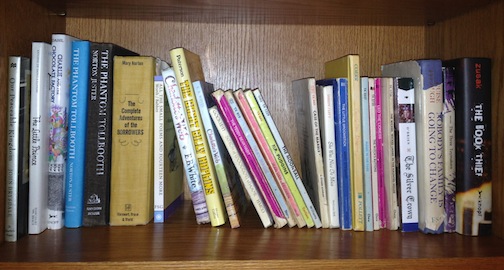
Here’s the list of what’s on this shelf. What would be on yours? (See below the list for a more refined version of that question.)
Our Peaceable Kingdom by John Drysdale (if these photos of unlikely animal and animal-human friendships don’t make you feel warm and fuzzy, nothing will)
The Little Prince by Antoine de Saint-Exupery (the original translation by Katherine Woods, which I still rebelliously prefer, possibly in part because it’s the one my mother read to me)
Charlie and the Chocolate Factory by Roald Dahl (interestingly, the one book that doesn’t maybe belong on this shelf. I loved it, but I only read it a few times.)
The Phantom Tollbooth by Norton Juster and Jules Feiffer (So brilliant, so full of wit! I have two versions here, my childhood copy and a newer copy, both autographed. Ahhhh.)
The Complete Adventures of the Borrowers, by Mary Norton (the first “omnibus” I ever encountered, and well-worn from re-reading)
All the small poems and fourteen more, by Valerie Worth, illus. by Natalie Babbitt (these weren’t from my own childhood, but I just love these poems and Natalie Babbitt’s pencil illustrations. I used them when I was a schoolteacher, so I suppose this is a comfort book from another part of my life.)
Charlotte’s Web by E. B. White, illus. by Garth Williams (the perfect novel; my childhood copy plus a more recent copy)
The Great Gilly Hopkins by Katherine Paterson (i think this is another perfect novel, and even though there are other Katherine Paterson books that are equally brilliant and fantastic, this one has a special place in my heart)
The Smith of Wootton Major by J.R.R. Tolkien (magical!!! another one my mother read to us, and many times over)
The Teddy Bear Habit by James Lincoln Collier (New York City in the 70s – so far from my Phoenix, Arizona childhood and therefore wildly compelling!)
Gray Magic by Andre Norton (this simple fantasy haunted me; I read it a zillion times)
I Was a 98-Lb. Duckling, by Jean van Leeuwen (so charming! This one stands up to the re-reading test and is perfect for tweens)
Mr. Pudgins by Ruth Carlsen (a book I have proselytized for bringing back into print — full of imagination and delight for young readers!)
The Moonball by Ursula Moray Williams (I was mostly fascinated by the idea of the kids discovering a ball made of a color they’d never seen before and used to twist my mind into a pretzel trying to visualize such a thing)
Case of the Marble Monster and Other Stories by I.G. Edmonds (these classic, clever Judge Ooka stories from Japan would still captivate 7-10-year-olds)
She Was Nice to Mice: The Other Side of Elizabeth I’s Character Never Before Revealed by Previous Historians by Alexandra Elizabeth (Ally) Sheedy, illus. by Jessica Ann Levy (a marvelous book written by the future actress Ally Sheedy as a child and beautifully illustrated by her thirteen-year-old friend, this is still my favorite book about Queen Elizabeth I)
The Little Broomstick by Mary Stewart (little witch boarding school! What wasn’t to love?!)
Twenty-Five Dragons by Eleanor Coerr (one of my earliest introductions to Chinese culture and art; a lovely story)
Magic in the Park and The Witch’s Buttons by Ruth Chew (great young magic books; I’ll be blogging about these books very soon!)
The Wicked, Wicked Ladies in the Haunted House by Mary Chase (soooo good, so creepy)
The Silver Crown by Robert C. O’Brien (a wonderful, complex fantasy for fans of A Wrinkle in Time)
Nobody’s Family Is Going to Change by Louise Fitzhugh (funny, sarcastic, unflinchingly honest about families and foibles; one of my all-time favorite books)
The Three Toymakers by Ursula Moray Williams (loved the forest village setting, the wolves, the toymaking, the suspense and just enough danger to have me mesmerized again and again. And Marta, the tempestuous, impulsive, spoiled talking doll!)
The Book Thief, by Markus Zusak (with Gilly, all the small poems, and Our Peaceable Kingdom, the only one(s) not from my childhood. I love this beautiful, gloriously written and felt book.)
I love all of these books below, and I’m sure some wouldn’t pass literary muster today. But they ignited my childhood imagination and fed me in a myriad of ways.
Dear Readers, if you were to move, and pack up just one shelf of favorite children’s books, what would you include? Especially, what would you include that aren’t considered classics?

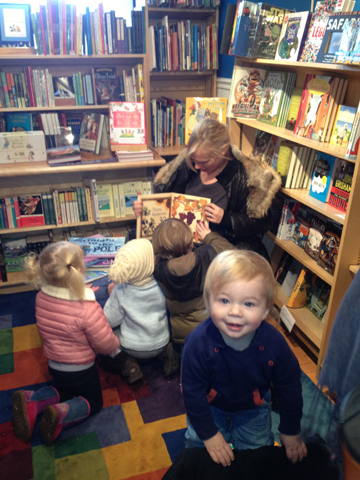
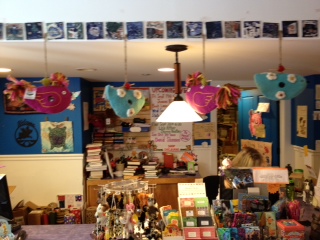

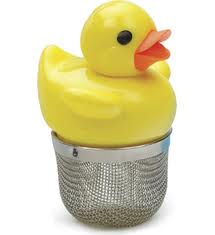
 I hadn’t realized slow-reading and series-end-avoidance were an encroaching habit of mine until recently, when I picked up R.L. LaFevers’ Dark Triumph, the April 2013 sequel to a book I *loved* last year, Grave Mercy, about a female assassin in 15th-century Brittany trained in a convent by nuns to do Death’s work. It is SO good, and is a favorite handsell. When the ARC of Dark Triumph arrived recently, I chortled (a slightly more dignified version of ‘squealed’) and snapped it up and handed the second copy to another staffer, Sandy. (I’d asked for two copies, since she is equally hooked and no good would have come of the one-copy fisticuffs.) I rushed home and began reading and immediately sighed happily, because the book begins with the same vigor and narrative propulsion and effortless writerly authority that makes Grave Mercy so darned good. But then … I put it down after only a couple of chapters. Not because I didn’t like it; quite the opposite. I don’t want to be done with it. So I am going little by little, one breathtaking, action-packed, beautifully written snippet, a chapter or half chapter at a time.
I hadn’t realized slow-reading and series-end-avoidance were an encroaching habit of mine until recently, when I picked up R.L. LaFevers’ Dark Triumph, the April 2013 sequel to a book I *loved* last year, Grave Mercy, about a female assassin in 15th-century Brittany trained in a convent by nuns to do Death’s work. It is SO good, and is a favorite handsell. When the ARC of Dark Triumph arrived recently, I chortled (a slightly more dignified version of ‘squealed’) and snapped it up and handed the second copy to another staffer, Sandy. (I’d asked for two copies, since she is equally hooked and no good would have come of the one-copy fisticuffs.) I rushed home and began reading and immediately sighed happily, because the book begins with the same vigor and narrative propulsion and effortless writerly authority that makes Grave Mercy so darned good. But then … I put it down after only a couple of chapters. Not because I didn’t like it; quite the opposite. I don’t want to be done with it. So I am going little by little, one breathtaking, action-packed, beautifully written snippet, a chapter or half chapter at a time. Slightly more unsettling is my reluctance to finish series I love. Giant confession: I did not read Mockingjay, though I loved the first two and have every reason to believe I’d love the third. Nor have I broken the spine of the final volume of Patrick Ness’s incredible Chaos Walking trilogy, Monsters of Men, though I have a gorgeous edition in my bedside bookcase, waiting.
Slightly more unsettling is my reluctance to finish series I love. Giant confession: I did not read Mockingjay, though I loved the first two and have every reason to believe I’d love the third. Nor have I broken the spine of the final volume of Patrick Ness’s incredible Chaos Walking trilogy, Monsters of Men, though I have a gorgeous edition in my bedside bookcase, waiting. My most recent avoidance is Eternally Yours, the third in a fantasy trilogy by Cate Tiernan that is one of my all-time favorite YA/crossover fantasies and most successful handsells. The first in this trilogy, Immortal Beloved, has a title that can be a hard handsell at first (it doesn’t suit the sharp humor and prickly nature of the heroine and story), but once readers get their hands on it, as with Grave Mercy, they are hooked. And I mean hard. We often have people mention, on subsequent visits to the store, that they loved a book we recommended to them. But Immortal Beloved is the only book I can think of where people actually telephoned the store specifically to thank me for a book recommendation. It’s happened three times with this one! So one would think I would not be able to resist the allure of the third in the series. And I can’t. In fact, it’s so alluring I won’t pick it up.
My most recent avoidance is Eternally Yours, the third in a fantasy trilogy by Cate Tiernan that is one of my all-time favorite YA/crossover fantasies and most successful handsells. The first in this trilogy, Immortal Beloved, has a title that can be a hard handsell at first (it doesn’t suit the sharp humor and prickly nature of the heroine and story), but once readers get their hands on it, as with Grave Mercy, they are hooked. And I mean hard. We often have people mention, on subsequent visits to the store, that they loved a book we recommended to them. But Immortal Beloved is the only book I can think of where people actually telephoned the store specifically to thank me for a book recommendation. It’s happened three times with this one! So one would think I would not be able to resist the allure of the third in the series. And I can’t. In fact, it’s so alluring I won’t pick it up.